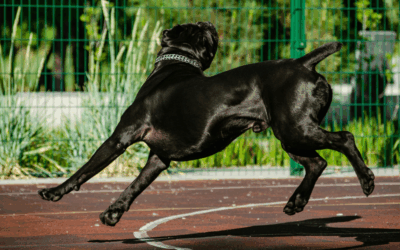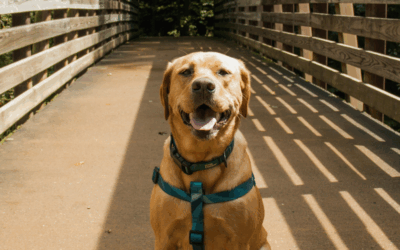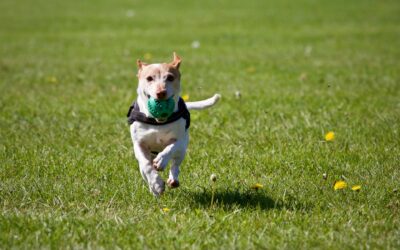If you’re a dog owner, you’ve likely heard about giardia, also known as “beaver fever.” This common intestinal parasite can cause discomfort, health complications, and stress for both you and your furry friend. But what exactly is giardia, and how do you recognize giardia symptoms in dogs, how do you treat the infection and protect your dog from future risks?
This blog aims to provide a comprehensive guide on giardia in puppy, senior and adult dogs, helping you understand the symptoms, causes, treatment, and prevention of this intestinal parasite.
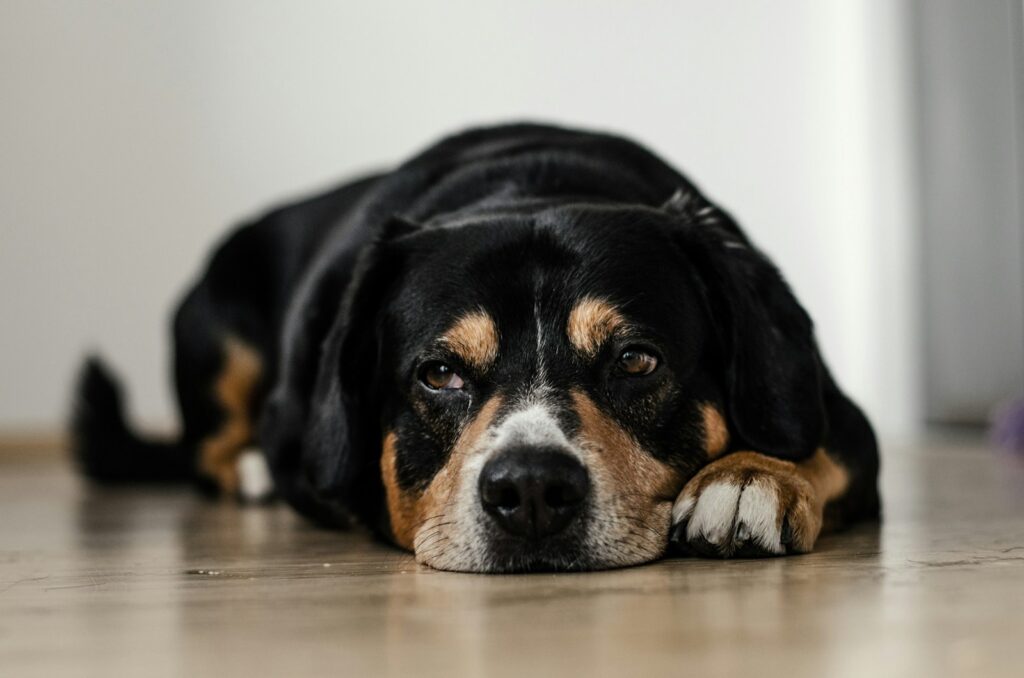
What Is Giardia and How Does it Infect Dogs?
Giardia is a microscopic parasite found in the environment and in the intestines of infected animals. The scientific name of this parasite is Giardia duodenalis, although it’s commonly referred to as giardia. It exists in two forms:
- Trophozoites (active stage): These attach to the host’s small intestine and cause giardia infections.
- Cysts (inactive stage): These are shed through the dog’s feces and can contaminate soil, water, and surfaces.
Dogs become infected by ingesting infective cysts found in fecal material, contaminated water, or soil. This process, known as the fecal-oral route, can happen when a dog licks contaminated ground, eats infested food, or drinks contaminated water from puddles, animal shelters, or dog parks.
Once ingested, the cysts travel to the dog’s small intestine, where they transform into trophozoites. These trophozoites attach to the intestinal lining, disrupting normal absorption and causing an intestinal infection.
As mentioned above, Giardia is a microscopic intestinal parasite that affects both animals and humans. It is a single-celled organism that attaches to the lining of the small intestine, disrupting the normal absorption of nutrients and causing digestive issues. Here are the main points about Giardia:
- Transmission: Giardia is typically spread through the ingestion of contaminated water, food, or soil. It can also be passed via direct contact with infected feces, making it highly contagious in environments like kennels or shelters.
- Life Cycle: The parasite has two forms – the active trophozoite, which resides in the intestine and causes symptoms, and the cyst, which is the dormant, infectious stage. Cysts are shed in the feces of infected animals and can survive in the environment for extended periods.
- Resilience: Giardia cysts are highly resistant to most standard cleaning agents and can thrive in moist, cool conditions for weeks or even months, making proper sanitation crucial in preventing its spread.
- Zoonotic Potential: While Giardia primarily affects animals, it can also infect humans. This zoonotic nature underscores the importance of maintaining hygiene for both pets and owners.
Understanding these fundamental aspects of Giardia is crucial to effectively preventing, identifying, and addressing infections in dogs and reducing the risk of transmission within your household.
Can Humans and Other Animals Be Affected?
Yes! Giardia is a zoonotic parasite, meaning it can infect humans and other animals, such as cats and wild mammals. It’s crucial to practice good hygiene when handling a dog suspected of having giardia, as improperly disposed dog poop can lead to environmental contamination and infection in both humans and pets.
Symptoms of Giardia in Dogs
Recognizing the symptoms of Giardia in dogs is essential for timely diagnosis and treatment. While some infected dogs may remain asymptomatic, the following symptoms are often observed in those affected:
- Diarrhea: One of the most common symptoms, Giardia often causes frequent and watery diarrhea. This can lead to dehydration if not addressed promptly.
- Soft or Greasy Stools: Dogs with Giardia may pass stools that appear abnormally soft, mucousy, or greasy due to the parasite’s impact on digestion.
- Weight Loss: Chronic infections can lead to weight loss, as Giardia interferes with nutrient absorption in the intestines.
- Lethargy: Affected dogs may exhibit decreased energy levels, appearing tired or less active than usual.
- Abdominal Discomfort: Dogs with Giardia might show signs of abdominal pain, which could manifest as whining, restlessness, or sensitivity when touched.
- Vomiting: Though less common, some dogs may experience nausea and vomiting as a result of the infection.
It is important to note that the severity of these symptoms can vary depending on the age of the dog infected, immune status, and the intensity of the infection. Puppies, senior dogs, and most dogs compromised immune systems are particularly vulnerable to more severe symptoms. If you notice any of these signs in your dog, consult a veterinarian promptly for an accurate diagnosis and treatment plan.
Diagnosing Giardia in Dogs
If you suspect your dog has giardia, consult your veterinarian immediately. Diagnosing giardia involves:
Stool Sample Analysis
A veterinarian will collect a stool sample to check for giardia cysts or trophozoites under a microscope.
Fecal Testing
Advanced diagnostic tests, such as ELISA (enzyme-linked immunosorbent assay), may be used to confirm the presence of antigens from the giardia organism.
Other Diagnostic Tests
Sometimes, additional testing may be recommended to check for other intestinal parasites or underlying issues.
Treating Giardia Infection
Once giardia is diagnosed, treatment should start immediately to ease your dog’s discomfort and prevent the spread of this parasite. The following steps are typically part of treating giardia:
Anti-Parasitic Medications
Veterinarians usually prescribe drugs like fenbendazole or metronidazole, which are effective in eliminating the giardia organism from the dog’s intestines. These medications must be administered for several days as directed.
Environmental Cleaning
Giardia cysts are hardy and can survive in the environment for long periods. To kill giardia cysts, use cleaning agents like quaternary ammonium compounds to disinfect surfaces where contaminated fecal material may have been present.
Bathing Your Dog
During treatment, bathe your dog frequently to remove cysts from their fur and prevent reinfection. Be sure to carefully clean their paws, especially if they’ve been exposed to contaminated ground.
Highly Digestible Diet
Switching to a highly digestible diet during treatment can ease symptoms like severe diarrhea and improve nutrient absorption while your dog’s intestines heal.
How to Prevent Giardia in Dogs
Preventing giardia requires a combination of good hygiene, environmental control, and proactive care. Here’s how you can prevent giardia infection:
- Clean and Dispose of Feces Immediately: Always pick up your dog’s stool promptly, especially in public areas like dog parks, to reduce environmental contamination.
- Provide Clean Drinking Water: Make sure your dog drinks clean water and avoid letting them drink from puddles, ponds, or other potentially contaminated water sources.
- Regular Grooming: Keep your dog well-groomed to minimize the risk of ingesting dirt or fecal matter containing infective cysts.
- Sanitize Living Areas: Regularly clean your dog’s bedding, toys, and food bowls using disinfectants that can kill giardia.
- Monitor Their Environment: Be cautious of areas with high concentrations of other animals, such as dog parks and animal shelters, which may increase exposure risk.
- Routine Veterinary Check-Ups: Schedule regular visits to the vet for fecal testing, especially if your dog often mingles with other pets or spends time outdoors.
Managing Giardia in a Household With Other Pets
Giardia can easily spread in households with multiple pets, including dogs, cats, and other pets. To prevent the parasite from infecting additional animals:
- Isolate infected pets until treatment is complete.
- Clean and disinfect shared areas daily.
- Treat all pets in the household if recommended by your veterinarian.
Why Does Giardia Pose a Risk to Human Health?
While rare, humans can contract giardia from infected dogs or contaminated environments. Individuals with compromised immune systems, such as children, the elderly, or those with chronic health conditions, are particularly at risk. Practicing proper hygiene, like washing your hands thoroughly after handling pets or their feces, can help reduce the chance of human infection.

Snouts and Stouts Indoor Dog Park and Bar – Health and Safety Requirements
At Snouts and Stouts Indoor Dog Park and Bar, the health and safety of all pets and patrons are top priorities. To ensure a safe and enjoyable environment, all visiting dogs are required to be up-to-date on their vaccinations and in good health.
This policy helps to minimize the risk of disease transmission and promotes a healthy space for dogs to socialize and play. Owners are encouraged to bring vaccination records and ensure their pets are free from any symptoms of illness before visiting. By maintaining these standards, Snouts and Stouts creates a welcoming community where both dogs and their owners can relax and have fun with peace of mind.
Helpful Resources for Giardia in Dogs
Here is a list of reliable resources to help you better understand and manage giardia infections in dogs:
American Veterinary Medical Association (AVMA) – Giardia Facts
AVMA Giardia in Pets This resource provides detailed information about giardia, its symptoms, diagnosis, and prevention for pet owners.
Centers for Disease Control and Prevention (CDC) – Giardia and Pets
CDC Giardia and Pets Learn about how giardia affects pets and how to minimize the risk of transmission between animals and humans.
VCA Animal Hospitals – Giardia in Dogs
VCA Giardia Information Comprehensive information on the causes, signs, treatment, and prevention of giardia infections in dogs.
The Merck Veterinary Manual – Giardiasis in Animals
Merck Veterinary Manual – Giardiasis A detailed veterinary perspective on giardiasis, with an emphasis on symptoms, life cycle, and treatment.
ASPCA – Managing Giardia in Dogs
ASPCA Giardia Management: Essential guidance for identifying and managing giardia in household pets, focusing on safety and health tips.
PetMD – Giardia in Dogs
PetMD Giardia Guide A practical resource made for pet owners explaining giardia symptoms, treatments, and prevention measures.
These resources offer valuable insights to help ensure the health and well-being of your pet through reliable education and advice.
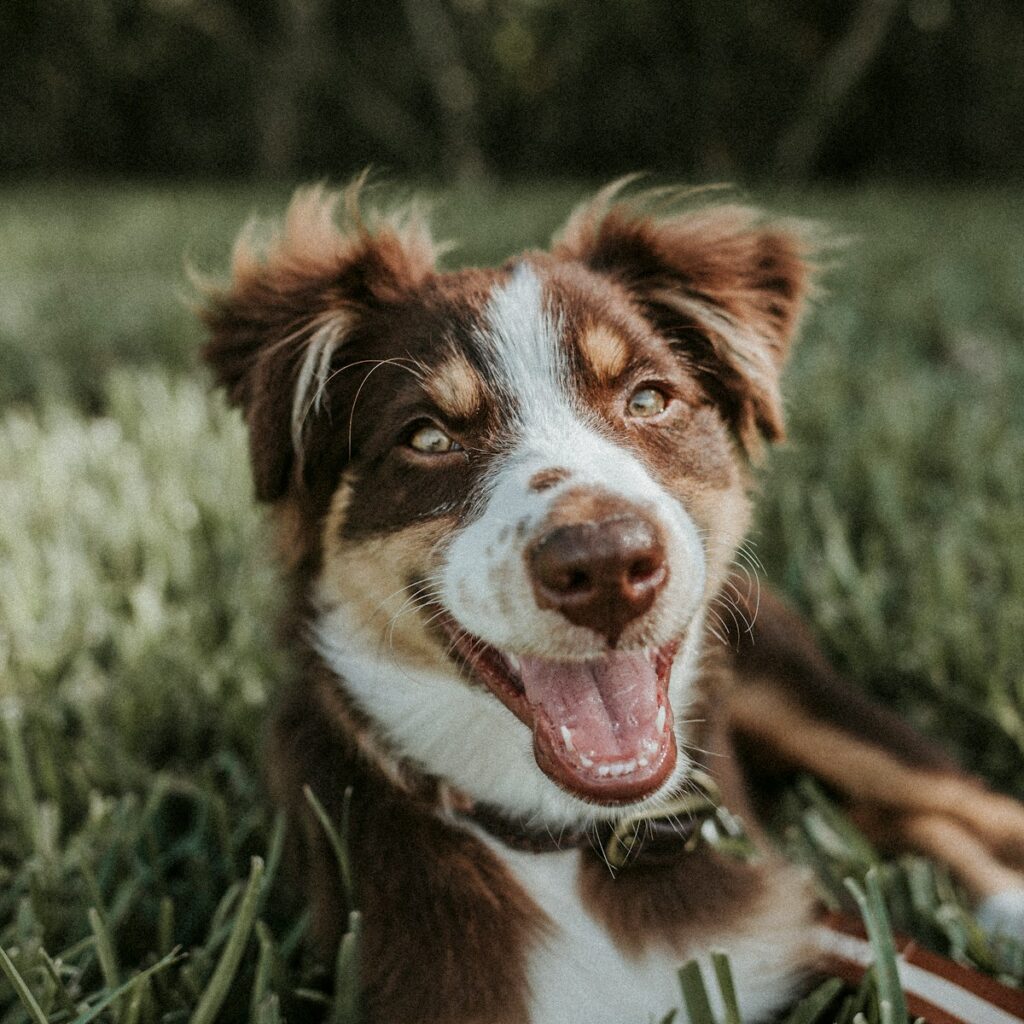
Act Now to Protect Your Dog
Giardia is a common but preventable issue among dogs. Early detection, proper treatment, and proactive prevention are key to protecting your furry friend and maintaining their health. If you suspect your dog may have giardia, don’t delay in consulting your veterinarian.
By keeping your pet’s environment clean, adhering to proper hygiene practices, and staying vigilant, you’ll greatly reduce the risk of infection for your dog and your household.


